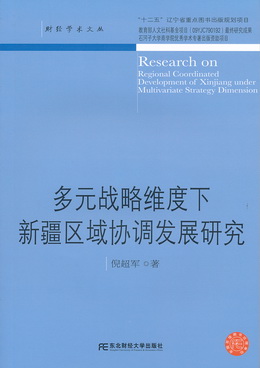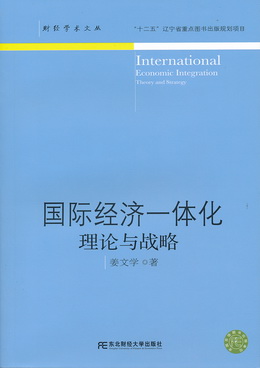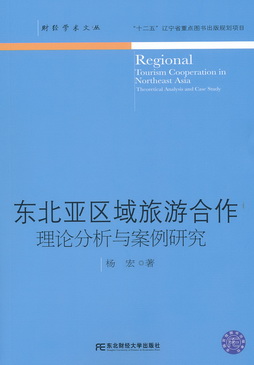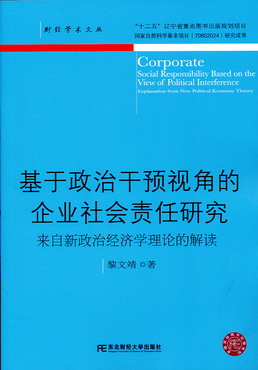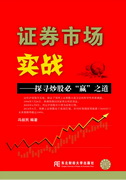内容简介
笔者的研究思路如下:首先,结合现有文献,构建利率风险结构的一个基准模型,为后续理论分析提供研究基础;其次,在基准模型的基础上,逐步引入软预算约束、资本管制等实际因素,将理论模型不断逼近现实,得出更为丰富、更具政策指导意义的研究结论;再次,利用某家大型商业银行的贷款定价模型开展案例研究,以深化上述理论研究;最后,提出有针对性的、可操作的政策建议。
经济学博士,清华大学经济管理学院数量经济学博士后,对外经济贸易大学国际经济贸易学院财政税务学系讲师,清华大学中国财政税收研究所兼职研究员。在Energy Policy、Economics Bulletin、《经济研究》、《经济学(季刊)》、《金融研究》、《世界经济》、《财贸经济》、《经济理论与经济管理》、《国际贸易问题》、《财政研究》、《经济科学》等国内外学术期刊上发表论文30余篇。主持国家自然科学基金项目(批准号71003059)、中国博士后科学基金特别资助项目(批准号201003134)以及财政部委托课题等多项国家级和省部级课题。曾获中国人民银行、浙江省等省部级奖励。
章节目录
1 导 论
1.1 问题的提出、研究意义与目的
1.2 研究内容、思路与方法
1.3 研究框架
1.4 创新点
1.5 本章附录
2 贷款定价与违约风险研究综述
2.1 经典利息理论及其蕴含的贷款定价思想
2.2 违约风险与贷款定价的相关文献
2.3 贷款定价的其他文献
3 我国金融机构贷款定价行为的现状及存在的问题
3.1 制度环境
3.2 现状分析
3.3 存在的问题
4 贷款定价与违约风险:考虑决策者内在偏好
4.1 贷款定价与跨期选择
4.2 经验事实
4.3 基于亚式期权方法的贷款定价模型
4.4 本章案例研究
4.5 本章小结
4.6 本章附录
5 贷款定价与违约风险:考虑借款企业软预算约束
5.1 传统期权定价方法存在的缺陷
5.2 贷款定价两资产择差期权模型的建立
5.3 贷款定价两资产择差期权模型的分析
5.4 考虑抵押担保
5.5 本章案例研究
5.6 本章小结
5.7 本章附录
6 贷款定价与违约风险:考虑资本管制
6.1 巴塞尔资本协议的背景考察
6.2 巴塞尔资本协议与贷款定价的文献补充
6.3 一个参照模型--不考虑违约风险
6.4 巴塞尔资本协议下的贷款定价模型--考虑违约风险
6.5 本章小结
6.6 本章附录
7 结论、政策建议与展望
7.1 主要结论
7.2 政策建议
7.3 存在的不足与下一步研究的展望
参考文献
后 记
表格索引
附表1—1 具有违约风险的信贷市场状态收益
附表1—2 银行信贷状态收益的一般情况
表2—1 存款保险业务各方收益与成本
表2—2 隐含违约风险的刻画方法
表2—3 与贷款定价相关的经验研究主要文献一览表
表3—1 2007年第一季度我国商业银行贷款利率浮动区间占比
表4—1 短期贷款余额经时间趋势调整后一阶差分序列的单位根检验
表4—2 dlnstloansa和dlnstloansa1的自回归条件异方差检验
表4—3 短期贷款余额提供的经验事实
表4—4 中期贷款余额经时间趋势调整后一阶差分序列的单位根检验
表4—5 中期贷款余额提供的经验事实
表4—6 某商业银行贷款定价模型的法定期限贷款利率细分表
表4—7 某商业银行贷款定价模型的信贷风险分值细分表
表4—8 某商业银行分行贷款定价模型的关注行业分值细分表
表4—9 某商业银行贷款定价模型的信贷管理成本分值细分表
表4—10 某商业银行贷款定价模型的资金成本分值细分表
表4—11 某商业银行贷款定价模型的客户贡献度分值细分表
表4—12 某商业银行分行贷款定价模型的比较项分值细分表
表4—13 某商业银行贷款定价模型的调整总分值与贷款利率浮动表
表4—14 债务企业信用等级的几种可能情况及其在贷款定价模型里的对应分值
表4—15 总行与分行的定价因子分值及其对应的贷款利率浮动幅度
附表4—1 因变量:t期短期贷款余额(平稳化处理后的一阶差分序列dlnstloansa)
附表4—2 因变量:t期短期贷款余额(平稳化处理后的一阶差分序列dlnstloansa1)
附表4—3 因变量:t期短期贷款余额(一阶差分序列dlnstloansa自回归模型——ARCH和GARCH)
附表4—4 因变量:t期短期贷款余额(一阶差分序列dlnstloansa自回归模型——GARCH)
附表4—5 因变量:t期短期贷款余额(一阶差分序列dlnstloansa1自回归模型——ARCH和GARCH)
附表4—6 因变量:t期短期贷款余额(一阶差分序列dlnstloansa1自回归模型——GARCH)
附表4—7 因变量:t期中期贷款余额(平稳化处理后的一阶差分序列ddlnmtloansa)
表5—1 具有违约风险的贷款合同最终收益的刻画
表5—2 某商业银行贷款定价模型指数分值(考虑第一类违约风险)
表5—3 某商业银行贷款定价模型指数分值(考虑第二类违约风险)
图形索引
图1—1 本文的技术路线图
图1—2 引入违约风险后信贷市场有效边界的移动
图2—1 常量违约风险下的银行贷款定价模型
图3—1 2006年以来金融机构各期限档次贷款利率走势图
图4—1 跨期选择与贷款定价
图4—2 1994年1月—2006年3月中国金融机构短期贷款余额走势图
图4—3 1998年1月—2005年12月我国金融机构中期贷款余额走势图
图4—4 债务企业当期价值( )与均衡贷款利率的关系
图4—5 债务企业支付红利( )与均衡贷款利率的关系
图4—6 债务企业价值的几何平均值( )与均衡贷款利率的关系
图4—7 到期偿付额( )与均衡贷款利率的关系
图4—8 违约风险( )与均衡贷款利率的关系
图4—9 无风险收益率( )与均衡贷款利率的关系
图4—10 违约风险与短期贷款定价——基于某家股份制商业银行的贷款定价模型
图4—11 违约风险与中期贷款定价——基于某家股份制商业银行的贷款定价模型
图5—1 债务企业价值与银行贷款利率的关系
图5—2 信贷合同效率与银行贷款利率的关系
图5—3 第一类违约风险与银行贷款利率的关系
图5—4 第二类违约风险与银行贷款利率的关系
图5—5 两类违约风险相关度与银行贷款利率的关系
图5—6 波动程度与银行贷款利率的关系
图5—7 波动程度与银行贷款利率的关系
图5—8 贷款期限与银行贷款利率的关系
图5—9 第一类违约风险与贷款定价——基于某家股份制商业银行的贷款定价模型
图5—10 第二类违约风险与贷款定价——基于某家股份制商业银行的贷款定价模型
图6—1 贷款利率与系统性风险的关系(采用纯粹考虑信用风险的资本金弹性约束)
图6—2 修正后贷款利率与系统性风险之间的关系
前言/序言
作为资本的价格,利率起着调节资本供求和价格发现等重要作用,一直以来都备受学术界、政策决策者和广大投资者关注。其中,市场利率是如何形成的这一问题吸引了大批学者,是大量理论和政策分析的研究对象。然而,经典的利息理论忽视了利率决定过程中资金借贷的期限与风险等问题,越来越无法解释现实;而之后的利率期限结构理论考虑的主要是标准化的债券市场,此时风险只是包含于期限的一个次要因素。因此,虽然能比较充分地研究利率与期限的关系,已有理论仍未深入地分析利率的决定与风险因素之间的内在机制——利率风险结构。
鉴于此,本书探讨以下问题:以非标准化的信贷市场作为分析对象,利率风险结构具有哪些规律性的特征?这些规律能为实际工作提供哪些重要的政策建议?通过回答上述问题,笔者的研究推进了对利率风险结构的理论研究,为后续开展有关利率风险结构的实证研究和政策分析,更好地利用利率与风险之间存在的内在关联来完善我国的利率形成机制,提供了依据和基础。
笔者的研究思路如下:首先,结合现有文献,构建利率风险结构的一个基准模型,为后续理论分析提供研究基础;其次,在基准模型的基础上,逐步引入软预算约束、资本管制等实际因素,将理论模型不断逼近现实,得出更为丰富、更具政策指导意义的研究结论;再次,利用某家大型商业银行的贷款定价模型开展案例研究,以深化上述理论研究;最后,提出有针对性的、可操作的政策建议。
根据上述研究思路,本书的主要内容包括:
第一,通过回顾既有文献和剖析现状,构建了一个基准模型,考察了“纯粹”的利率风险结构,即不考虑任何特定的外在约束条件,只保留决策者内在偏好和基本约束条件时,贷款定价与违约风险会呈现出何种关系。利用我国金融机构贷款余额月度数据,笔者发现国内商业银行贷款定价决策存在某种跨期选择特性——当期决策受前期信息的影响。而将这种特性融入决策者内在偏好,建立贷款定价模型后,我们发现导致目前国内商业银行贷款定价决策草率的原因在于外在约束条件(各种制度因素),而非决策者内在偏好。这一结论一方面说明现阶段偏重制度完善的利率市场化改革至少在方向上是正确的,另一方面也为后续研究作了必要的铺垫。
第二,依托基准模型的逻辑框架,简化决策者内在偏好,并重点分析在借款企业软预算约束这一具有中国特色的约束条件下,利率风险结构的规律性特征。由于软预算约束导致“优先原则”不成立,且会产生还贷道德风险等问题,贷款定价的传统期权方法在中国的适用性受到了影响。通过引入信贷合同效率,笔者构造了一个由两类风险构成的二维违约风险,据此建立了贷款定价的新模型,得到了违约风险的程度、相关度和结构与贷款利率之间存在确定关系等结论。这一方面说明,一旦引入借款企业软预算约束这一特定约束之后,上述因素是决定利率风险结构的要件;另一方面则反映了简化决策者内在偏好并引入特定外部约束之后,利率风险结构会呈现出一定的规律性特征,贷款利率与风险因素之间具有比较明确的关系。
第三,由于借款企业软预算约束具有中国特色,为了增强研究结论的稳健性和可信性,笔者还考察了较之更具国际性的一类特定约束条件——资本管制。由于固定不变的资本金充足率已难以帮助商业银行有效抵御各类风险,《巴塞尔新资本协议》(Basel II,2004)规定了更富弹性的资本金要求。通过构建涵盖违约风险和系统性风险的贷款定价模型,笔者研究了两类资本金弹性约束——纯粹考虑违约风险损失的最低资本金要求,以及兼顾违约风险损失与银行盈利能力的最低资本金要求对利率风险结构的影响。研究发现:前一类资金本约束会导致不当的银行贷款定价决策,而后一类资本金约束则能有效解决上述贷款定价与系统性风险之间存在的不合理关系。此外,与借款企业软预算约束相似,考虑资本管制时,利率风险结构也呈现出一定的规律性特征,贷款利率与违约风险、系统性风险之间的关系是明确的。
第四,由于缺乏微观数据,笔者以国内某家大型股份制商业银行在实际工作中采用的贷款定价模型作为实例进行案例研究,检验了上述关于利率风险结构的部分理论观点,作为理论研究的经验补充。
第五,结合我国金融机构贷款定价行为的现状及存在的问题,并根据理论研究和实例分析得到的结论,笔者提出了改进和完善我国金融机构贷款定价机制的政策建议。具体包括:要从根本上解决目前国内商业银行存在的贷款定价决策缺乏科学依据、过于草率的问题,重点是从制度上寻找原因;银行应高度重视贷后对借款者的信息监督,建立完备的信贷市场信用评级体系,进一步完善现有的商业银行客户经理制度,提高借贷合同的效率;银行进行资本监管,不应仅考虑信用风险及其他风险因素,还须兼顾自身的盈利能力等。
概括起来,通过对利率风险结构的上述研究,笔者发现:考虑风险因素,利率将不再是单一和恒常的,而是多样且多变的;在特定的制度约束条件下,利率风险结构具有显著的规律性特征,包括风险的程度和构成、不同风险之间的相关性、风险与盈利的融合度等因素都会决定利率风险结构的变化,从这些变化关系里,可发掘出利率与风险之间丰富的内在关联,为建立合理的利率形成机制提供科学依据。
作者
2012年3月于育新花园
Abstract
The classic theories of interest could no longer be able to explain the reality for they ignored roles played by term and risk in decision of interest rate. Although the following theory of term structure of interest rate discussed completely about relationship between interest rate and term, risk structure of interest rate pointed out by Merton (1974), i.e., relationship between interest rate and risks, has not yet been investigated deeply in that this theory emphasized the standard bond markets in which the risk is second to the term. This book tries to further the understanding of risk structure of interest rate by analyzing process of loan pricing decision with regard to default risk in non-standard credit markets, covering questions like what the property of risk structure of interest rate will be if we concern only decision makers’ internal preference but not any specific external constraints, and whether introduction of specific constraints will cause changes in risk structure of interest rate. Combining the two mainstream approaches of option-based pricing and linear-factor pricing, the book tries to solve these questions by introducing new concerns.
To begin with, the book sets up a benchmark model, concentrating on the “pure” risk structure of interest rate, i.e., relationship between loan rate and default risk concerning only decision makers’ nature but no specific constraints. An empirical analysis on the monthly data of Chinese financial institutions’ lending balance enlists some evidence for the fact that China’s commercial banks’ loan pricing decisions are a specifically intertemporal choice behavior. As soon as this aspect of loan pricing decisions is fully concerned, based on a new model of loan pricing using the Asian Option approach, the decisions show a property of robust discreetness. This finding, not resulting from the literature, illustrates the reasons why loan pricing decisions made by China’s bankers are rash should be more likely attributed to external constraints like institutional factors, but not to internal human natures, which to some extent proves the direction of recent relevant reforms is correct. Furthermore, this result also verifies adequateness of logic for the following studies on effects of specific external constraints on risk structure of interest rate.
Secondly, regarding the gap between the pure risk structure of interest rate and the reality, we then consider the property of risk structure of interest rate under soft budget constraint, which is a China-specific constraint, by simplifying decision-makers’ internal preference based on the above benchmark,. The existent option-method models of bank’s loan pricing ignore some realistic problems like the absence of the Priority Rule caused by the soft budget constraint and the occurrence of the moral hazard in the loan market, which makes the models’ adaptation in China suspected. With regard to these problems, we introduce the efficiency of loan contract as a new component of credit risk in loan market and design a two-dimension default risk, with which a two-asset worse-of option model for loan pricing is set up. Concluding these two default risks have an inverse correlation with loan rate, the new model indicates that once certain constraint is taken into account, risk structure of interest rate will show some rules, which means there are some definite relationships between loan rate and risky factors.
Thirdly, in order to reinforce the robustness and credibility of our findings, the book continues the research of risk structure of interest rate under a more international constraint, i.e., capital regulation. The new Basel Capital Accord (or 2004’s Basel II) results in more flexible capital requirements for the previous constant standard has been no longer effective to help commercial banks against risks. Based on a model of loan pricing involving default risk and systematic risk, we discuss the consequences of two different capital flexible constraints, i.e., one regarding only loss of default risk and the other balancing loss of default risk with bank’s capacity to earn profits. The results indicate: under the IRB of Basel II, the former kind of minimum capital requirement leads to wrong loan pricing decisions, while the latter is able to solve the problem mentioned above. As similar to the case of soft budget constraint, risk structure of interest rate under capital regulation has also some definite property.
In addition, given lack of micro-level data and to complement the above theoretical studies of loan pricing and credit risk with some credible empirical evidence, we adopt a real loan pricing model used by a domestic commercial bank as a case. The case study proves some of theoretical results. However, Chapter six fails to get empirical support for Chinese banks consider little about capital regulation in loan pricing.
Finally, on the basis of the above theoretical and empirical research, we give policy suggestions, including the direction of relevant reforms should be toward to institution improvement but not decision-maker’ attitudes, banks should reinforce information regulation after signing loan contract for efficiency-improvement of the contract, and build up a flexible capital requirement regarding both risks and profitability and etc. Some shortcomings and plan for further work are also mentioned in the end of the book, such as the case study has limitation, some other external constraints should also be considered, the findings of this book should be correlated closer to the reality and so on.
In sum, the book concludes that interest rate will no longer be single and constant after introducing risks, but be multiple and changeable. Under certain institutional constraints, risk structure of interest rate shows some definite properties, on which factors like extent and composition of risks, correlation of different risks, relationship between risk and profitability have influence.
 | 会员指南
| 会员指南 | 会员指南
| 会员指南

